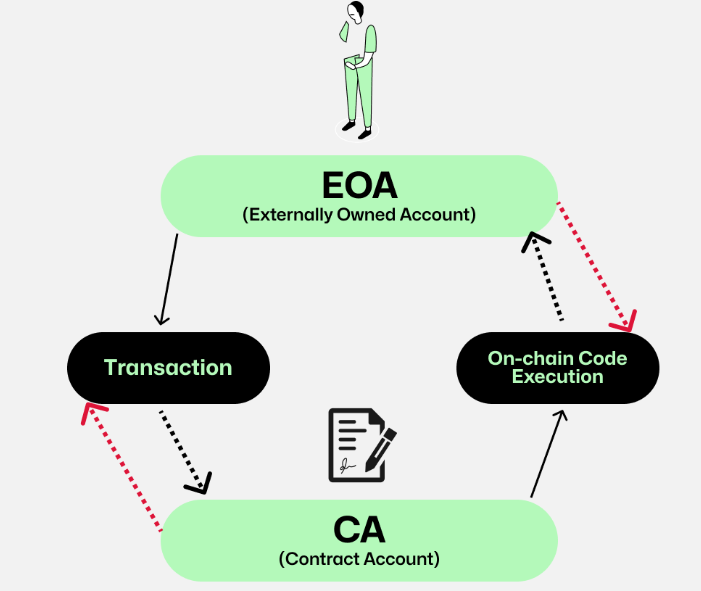Building a Thriving Web3 Community in 2024: Strategies and Best Practices

Ethereum is poised to revolutionize the world of decentralized applications (DApps), offering developers a vibrant alternative playground filled with unique advantages. Picture Ethereum as a dynamic canvas where developers can bring their decentralized visions to life, free from the constraints of a central authority. This is a game-changer, especially for scenarios demanding rapid development, security for smaller to medium-sized applications, and seamless interaction between diverse applications.
At its heart, Ethereum introduces a groundbreaking abstract layer — the ultimate foundation: a blockchain empowered with an integrated Turing-complete programming language. Let’s simplify this. Ethereum essentially provides a digital playground where anyone can unleash their decentralized dreams using smart contracts and DApps.
Smart contracts are akin to enchanting cryptographic boxes that securely hold value and only reveal their treasures under specific conditions. To paint a vivid picture, imagine a vending machine that dispenses your favorite snack only when you insert the exact amount of money. Ethereum’s scripting language is so versatile that even a basic version of something like Namecoin can be crafted in just two lines of code. Moreover, you can fashion other protocols such as currencies and reputation systems in less than twenty lines!
Now, envision Ethereum not just as a platform but as a turbocharged playground where developers can craft smart contracts wielding more power than Bitcoin scripts. This enhanced capability is rooted in Ethereum’s Turing completeness, value awareness, blockchain consciousness, and state awareness. In simpler terms, it’s like trading in your basic calculator for a high-powered computer when it comes to executing complex tasks on the blockchain. Thrilling, isn’t it? This is the enchanting magic of Ethereum, unlocking boundless possibilities for developers and users alike!
 Exploring the Vibrant World of Ethereum Accounts!
Exploring the Vibrant World of Ethereum Accounts!Welcome to the vibrant world of Ethereum accounts! Ethereum, the innovative blockchain platform, revolves around entities known as “accounts,” each contributing to the dynamic ecosystem. Let’s embark on this exciting journey and unravel the magic behind Ethereum’s account system.
In Ethereum, accounts serve as the backbone of the entire system’s state. These digital entities, identified by unique 20-byte addresses, facilitate seamless value and information transfers, shaping the decentralized landscape. Imagine Ethereum accounts as digital wallets brimming with four crucial elements:
- Nonce: Think of the nonce as a special ticket ensuring the validity of each transaction. It safeguards against duplicate processing, guaranteeing smooth and secure transactions.
- Current Ether Balance: Ether, the lifeblood of Ethereum, fuels transactions and interactions within the network. Each account diligently tracks its ether balance, ensuring seamless participation in the Ethereum ecosystem.
- Contract Code: Enter the realm of smart contracts! For contract accounts, this field houses the revolutionary code powering smart contracts. These digital marvels are akin to tiny computer programs residing on the Ethereum blockchain, capable of executing predefined actions autonomously.
- Account Storage: A digital locker awaits! Initially empty, this field serves as storage for contract accounts, enabling them to retain vital information persistently. It’s where smart contracts store and manage data, facilitating seamless operations within the Ethereum network.
Now, let’s delve into the two primary types of Ethereum accounts:
- External Owned Accounts (EOAs): Empowered by private keys, EOAs grant users full control. With a private key in hand, users wield the power to initiate transactions and interact with the Ethereum network effortlessly.
- Contract Accounts: Enter the realm of autonomous agents! Controlled by their code, contract accounts spring to life upon receiving messages triggered by transactions. They autonomously execute predefined functions, manage internal storage, and interact with other entities within the Ethereum ecosystem.
In Ethereum, contracts transcend traditional notions, emerging as autonomous entities within the network. Picture them as digital companions, responding to cues in the Ethereum universe with precision and efficiency.
Embark on this exhilarating journey through the Ethereum landscape, where accounts serve as catalysts for innovation, empowerment, and decentralized collaboration.
 Navigating the Wonders of Ethereum: Messages and Transactions Unveiled!
Navigating the Wonders of Ethereum: Messages and Transactions Unveiled!Let’s embark on a thrilling journey into the enchanting realm of Ethereum’s messages and transactions! Within the expansive Ethereum universe, transactions serve as the conduits of communication, facilitating seamless interactions between accounts and smart contracts. Prepare to be captivated by the magic encapsulated within these data packages!
In Ethereum parlance, a “transaction” represents a meticulously crafted data package imbued with the sender’s intentions, ready to traverse the blockchain landscape. These transactions carry a treasure trove of information, including:
- Recipient of the Message: The fortunate Ethereum account destined to receive the sender’s missive, eagerly awaiting its arrival.
- Sender’s Signature: A cryptographic seal, authenticating the sender’s identity and ensuring the integrity of the transaction.
- Amount of Ether to Transfer: The ethereal currency of Ethereum, poised to journey from sender to recipient, igniting sparks of economic exchange.
- Optional Data Field: A versatile canvas for additional information, akin to a personalized note accompanying the transaction, enriching its context and significance.
- STARTGAS Value: A beacon guiding the transaction through the labyrinth of computational processes, setting a prudent limit on its resource consumption.
- GASPRICE Value: The tollgate to Ethereum’s computational realm, determining the cost of each step in the transaction’s journey.
While the first three elements resonate with traditional cryptocurrency transactions, Ethereum introduces an exhilarating twist with the optional data field. Here lies the gateway to boundless creativity, empowering smart contracts to decipher and act upon transmitted data with finesse. Imagine a blockchain-powered domain registration service, seamlessly processing domain names and IP addresses encoded within transaction data, all orchestrated by smart contracts!
Now, let’s shine a spotlight on the indispensable STARTGAS and GASPRICE fields, guardians of Ethereum’s anti-denial-of-service fortress. In a landscape teeming with computational possibilities, these fields serve as vigilant sentinels, thwarting potential exploits and ensuring fair resource allocation. Each transaction pledges its allegiance to a predefined gas limit, navigating the intricate web of computational complexities with grace.
Furthermore, Ethereum’s fee structure, governed by gas consumption, embodies the spirit of equity and sustainability. Every interaction with the network, whether computational prowess, bandwidth utilization, or storage requisites, incurs a proportional fee, fostering a harmonious ecosystem of shared resources.
Behold the brilliance of Ethereum’s transaction architecture, a symphony of innovation and inclusivity! As we traverse this digital frontier, let’s marvel at the ingenuity woven into every transaction, propelling Ethereum towards a future illuminated by boundless possibilities.
Unveiling the Marvels of Messages in Ethereum!Within Ethereum’s vibrant ecosystem, contracts wield a remarkable power — the ability to dispatch messages to their peers. These messages, akin to ethereal messengers traversing the Ethereum execution environment, carry a wealth of information encapsulated within their virtual essence. Let’s unravel the components of these digital emissaries:
- Sender of the Message (implicit): Seamlessly integrated into Ethereum’s fabric, the sender’s identity is automatically discerned within the execution environment, facilitating frictionless communication.
- Recipient of the Message: A designated Ethereum account awaits the arrival of the message, poised to receive its payload of ether and information.
- Amount of Ether to Transfer: Embedded within the message is the ethereal currency of Ethereum, ready to journey alongside its message bearer to its destined recipient.
- Optional Data Field: Much like transaction data, this versatile field accommodates additional information, enriching the message’s context and enhancing its utility.
- STARTGAS Value: A beacon guiding the message’s execution through the labyrinth of computational processes, ensuring efficient resource utilization.
Imagine a message as a dynamic sibling to a transaction, born from the depths of a contract’s execution. Unlike transactions initiated by external actors, messages originate from within the code, signaling the recipient contract to execute its predetermined functions. This seamless interplay between contracts mirrors the fluidity of human interactions, fostering a vibrant ecosystem of decentralized collaboration.
Crucially, Ethereum’s meticulous gas allocation mechanism extends its benevolent embrace across the entirety of the execution chain. Each transaction and subsequent message adhere to predefined gas limits, ensuring comprehensive management of computational resources. This harmonious orchestration of digital conversations among contracts underscores Ethereum’s commitment to efficiency and innovation.
 Deciphering the Ethereum State Transition
Deciphering the Ethereum State TransitionLet’s embark on an exhilarating journey to demystify the Ethereum state transition function, APPLY(S, TX) -> S’, in a way that’s as delightful as unraveling a treasure map!
- Transaction Validation:
- We kick off our adventure by ensuring our transaction is well-formed, with all the necessary components, including a valid signature and matching nonce. It’s like checking our entry ticket to the Ethereum wonderland!
2. Calculate Transaction Fee:
- Next, we calculate the transaction fee, ensuring fairness and sustainability within the Ethereum ecosystem. Think of it as tipping our hat to the Ethereum network for its invaluable services!
3. Gas Initialization:
- Let’s fuel our journey with gas, initializing our resources to power through the Ethereum landscape. After all, every adventure needs a reliable source of energy!
4. Value Transfer:
- With our resources in check, we embark on the exciting task of transferring value between Ethereum accounts. It’s like sending digital treasure chests filled with ethers to our fellow adventurers!
5. Handle Transfer Failures:
- Along the way, we encounter obstacles, but fear not! We gracefully handle any mishaps, ensuring the safety of our expedition party and rewarding the brave miners who safeguard our journey.
6. Finalize Transaction:
- As our journey concludes, we celebrate our successful expedition by refunding any unused resources and generously compensating the diligent miners who paved our way.
For a real-world example, imagine crafting a smart contract in Serpent, a high-level language. Our contract snippet checks for a specific storage index and sets its value if not found. With each transaction, we embark on an adventure of validation, deduction, execution, and reward, all orchestrated seamlessly within the Ethereum universe.
Remember, messages in Ethereum function similarly to transactions, ensuring safety and reliability with every interaction. As we navigate this digital wonderland, Ethereum’s mechanics create a secure and dependable environment for executing smart contracts, paving the way for endless possibilities and boundless adventures!
